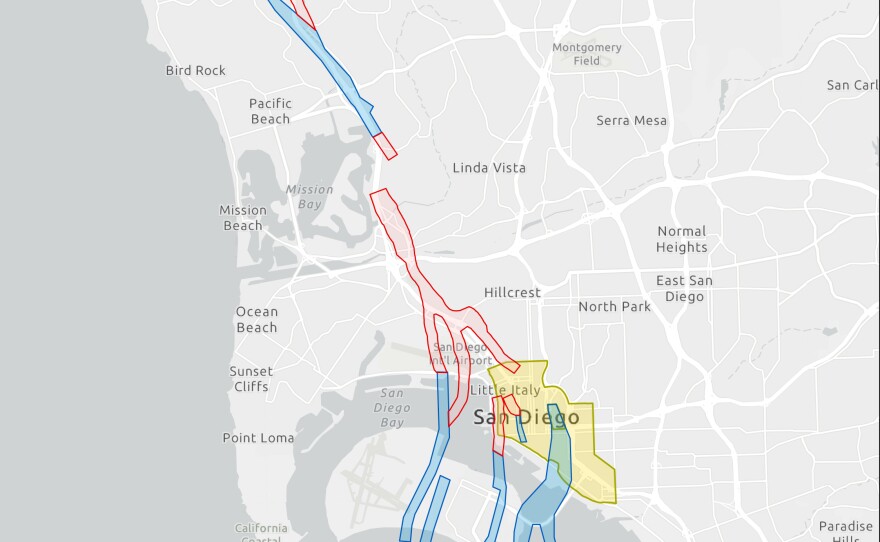Following the release of two maps last week by the California Department of Conservation, San Diego is notifying residents and property owners of proposed changes to earthquake fault zones within city limits which could potentially impact development and real estate transactions, it was announced Friday.
On Feb. 18, the California Geological Survey released the maps expanding existing fault zones previously mapped within the city. The new maps expand regulatory zones encompassing surface traces of active faults from La Jolla to downtown San Diego. These zones are at risk of surface fault rupture in the event of an earthquake.
Some of the new proposed fault lines include a several-mile stretch originating from a northern point near Mission Bay southward in three prongs through the San Diego International Airport, Old Town, Mission Hills and as far south as Bankers Hill.
"State geologists have been evaluating those geological studies and, on that basis, recommend expanding the earthquake fault zones, as reflected in the newly released Preliminary Earthquake Fault Zone maps," said city geologist Jim Quinn. "Informing the public about the risk of surface fault rupture within the fault zones identified on these maps will help increase awareness.
RELATED: Earthquake Institute Warns Of A Big One Hitting San Diego
Future development and construction proposed within these zones may be required to conduct a fault hazard investigation as part of the permitting process. Additionally, under state law, sellers in real estate transactions must disclose whether the parcel or real estate is located in an earthquake fault zone.
"The city is also obligated to screen all proposed development and building construction projects within the identified fault zones, and certain projects may be required to conduct a fault investigation as part of the permit process," Quinn said.
The CGS creates earthquake fault zone maps under the Alquist-Priolo Act, established following the 1971 San Fernando earthquake. The last time one of these maps was released in the city was in 2003. Since then, more recent geologic studies have provided additional information to inform map updates.
The State Mining and Geology Board has opened a 90-day public comment period to provide technical review comments on the updated maps. After the public comment period has closed, the maps will become official and the Alquist- Priolo Act requirements will become effective.
All comments must be submitted to the State Mining and Geology Board before May 19, 2021, and addressed to:
Jeffrey Schmidt, Executive Officer
State Mining and Geology Board
801 K Street, MS 20-15
Sacramento, CA 95814-3528
After the public comment period, the State Mining and Geology Board will hold a public hearing. For more information, go to www.conservation.ca.gov/smgb.







